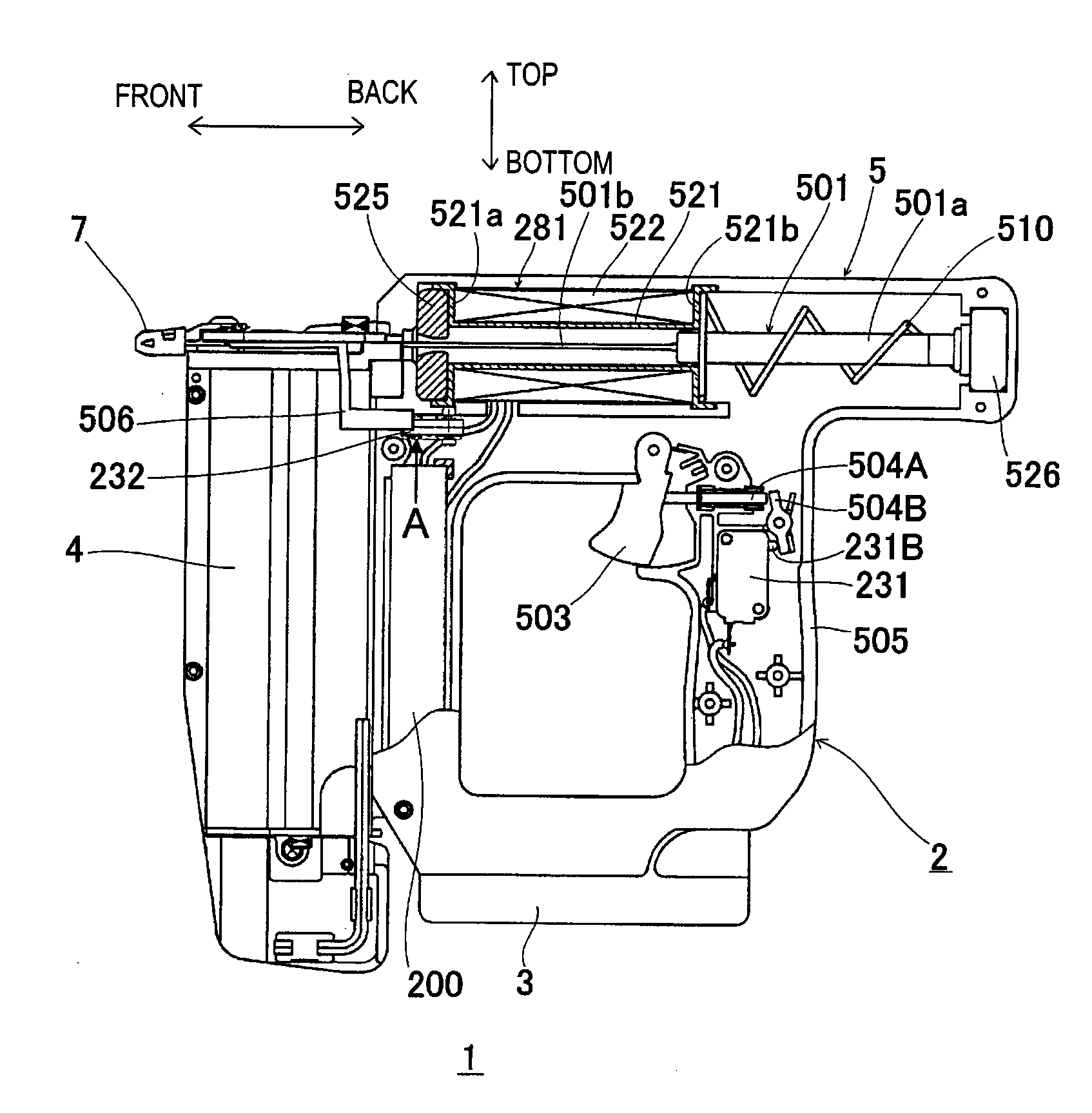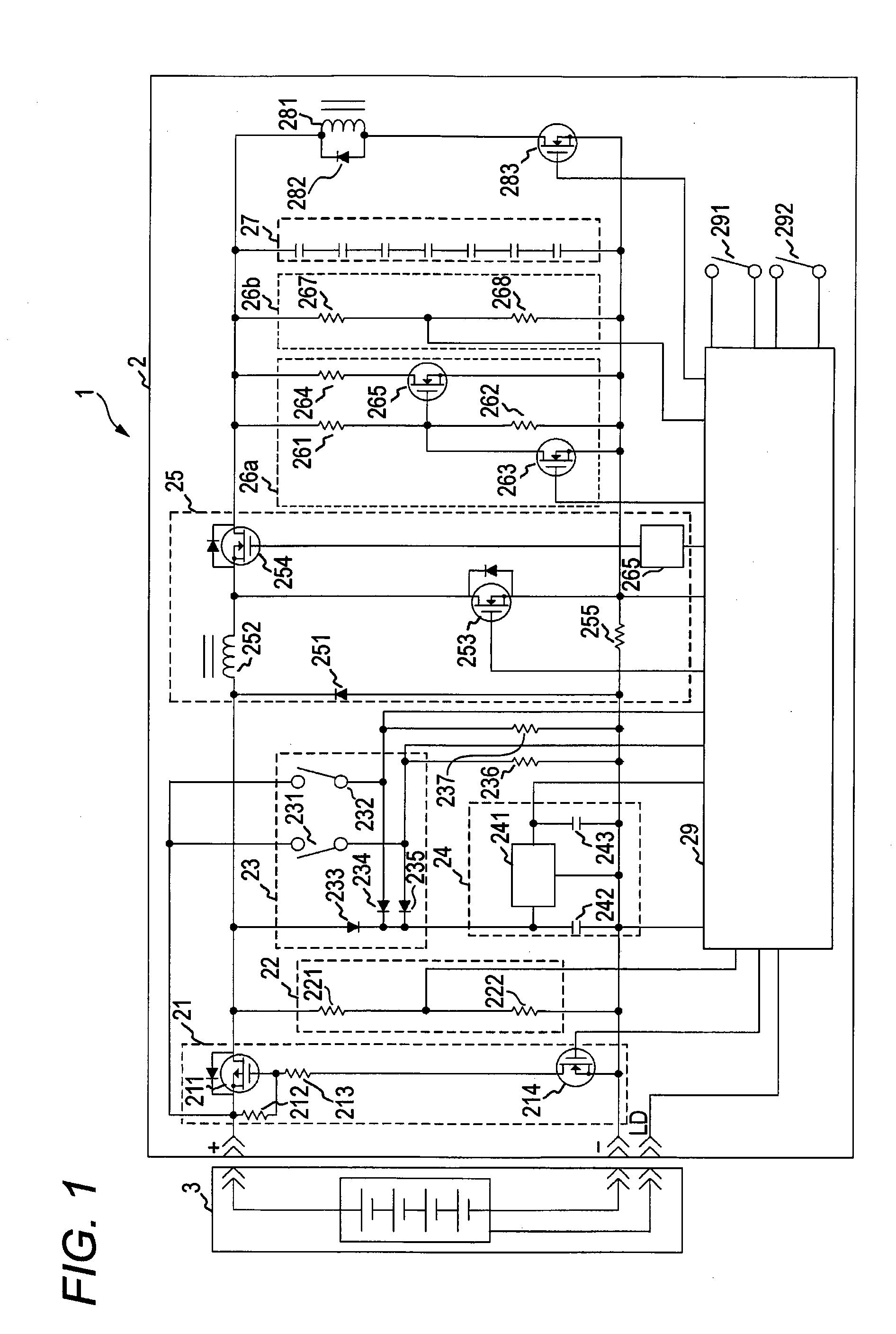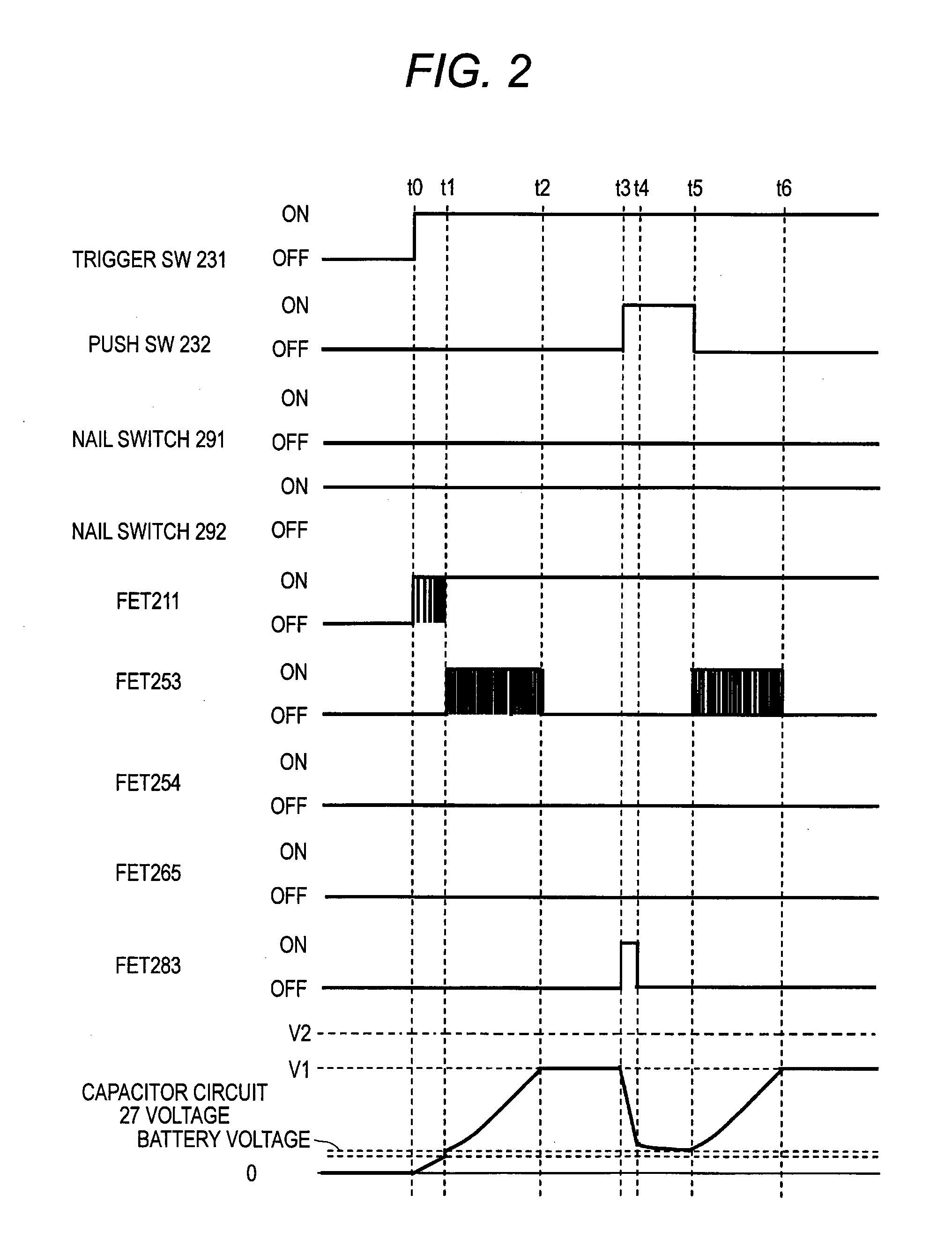Electric tool and method of driving electric tool
a technology of electric tools and electric motors, applied in the field of electric tools, can solve the problems of reduced increased circuit consumption, and accelerated consumption of secondary batteries, and achieve the effect of reducing the work rate per one charging operation and increasing circuit consumption
- Summary
- Abstract
- Description
- Claims
- Application Information
AI Technical Summary
Benefits of technology
Problems solved by technology
Method used
Image
Examples
Embodiment Construction
[0135]Hereinafter, a preferred embodiment of the present invention will be described in detail with reference to the drawings. The same or equivalent constituent elements, members, and processing illustrated in the respective drawings are denoted by identical symbols, and a repetitive description will be appropriately omitted. The embodiment does not limit the present invention, but exemplify the present invention, and all of the features described in the embodiment, and a combination thereof are not always essential to the present invention.
[0136]FIG. 1 is a circuit diagram of an electric tool 1 according to an embodiment of the present invention. FIGS. 2 to 4 are timing charts illustrating temporal changes in on / off operation of respective switches in the circuit illustrated in FIG. 1 and a voltage across a capacitor circuit 27. FIG. 5 is a flowchart illustrating the operation of the circuit illustrated in FIG. 1. FIG. 6 is an external view of the electric tool 1. FIG. 7A is a par...
PUM
 Login to View More
Login to View More Abstract
Description
Claims
Application Information
 Login to View More
Login to View More - R&D
- Intellectual Property
- Life Sciences
- Materials
- Tech Scout
- Unparalleled Data Quality
- Higher Quality Content
- 60% Fewer Hallucinations
Browse by: Latest US Patents, China's latest patents, Technical Efficacy Thesaurus, Application Domain, Technology Topic, Popular Technical Reports.
© 2025 PatSnap. All rights reserved.Legal|Privacy policy|Modern Slavery Act Transparency Statement|Sitemap|About US| Contact US: help@patsnap.com



